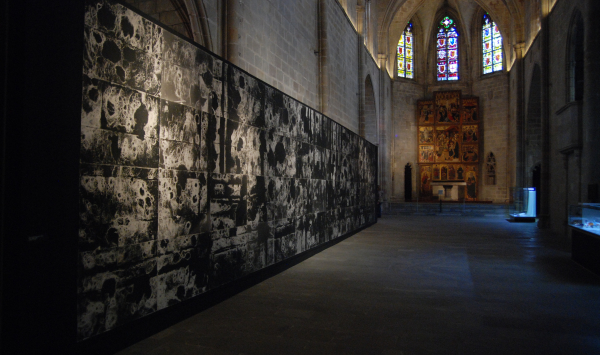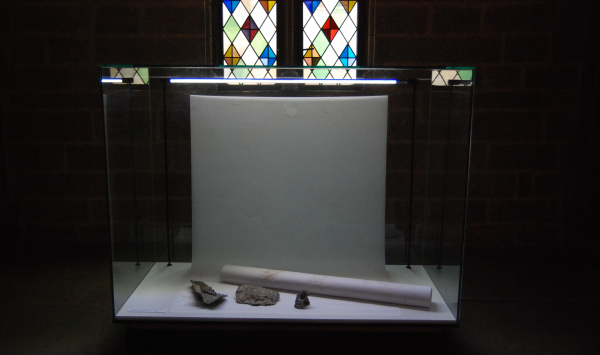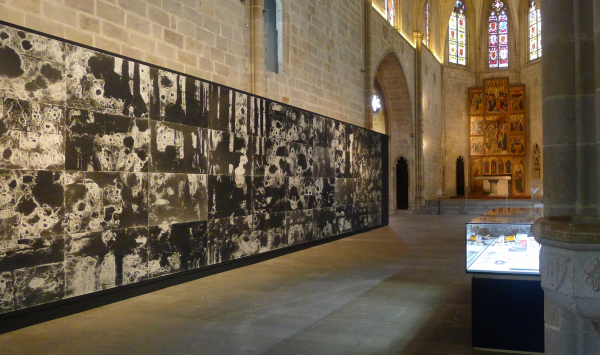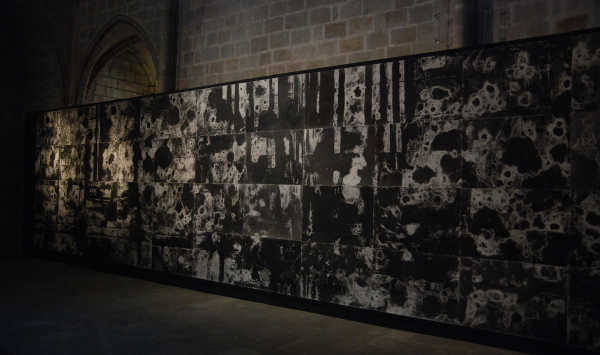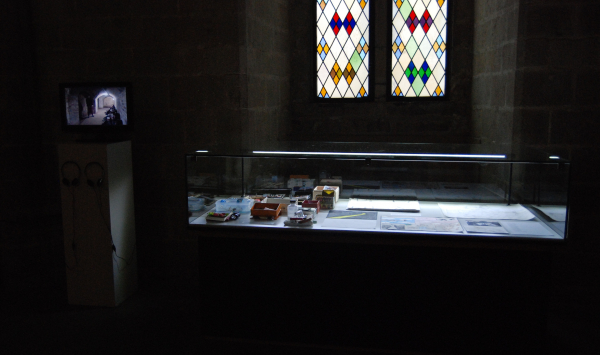- 14th EDITION 2022 / 2023
- 13th EDITION 2021 / 2022
- 12th EDITION 2020 / 2021
- 11th EDITION 2019 / 2020
- 10th EDITION 2018 / 2019
- 9th EDITION 2017 / 2018
- 8th EDITION 2016 / 2017
- 7th EDITION 2015 / 2016
- 6th EDITION 2014 / 2015
- 5th EDITION 2013 / 2014
- 4th EDITION 2012 / 2013
- 3rd EDITION 2011 / 2012
- 2nd EDITION 2010 / 2011
- 1st EDITION 2009 / 2010
Fernando Prats IN RESiDENCE at the School Menéndez y Pelayo
Passive Defence Action
Passive Defence Action
Sant Felip Neri Wall
2013
Smoke on paper
2.80 x 14 m
Refuge 307
2013
Bronze casts taken from the wall in the Refuge 307 air-raid shelter
For the residency at Institut Menéndez y Pelayo, Fernando Prats proposed the project Acció defensa passiva [Passive Defence Action], a meditation on the air raids that the city of Barcelona suffered during the Spanish Civil War.
The project was conceived as a work of symbolic reparation, recognition and tribute to all the women, men and children who suffered these air raid bombing attacks and all the families that, even today, silently carry the burden of what was one of the most painful episodes in the history of Catalonia.
The project is structured around two main activities: the intervention in the wall in Plaça de Sant Felip Neri and research and documentation on the Refuge 307.
Refuge 307 (Poble-sec) is an air-raid shelter formed by more than two hundred metres of tunnels.
Its walls testify to the hard work and strength that children, women and elderly people employed in order to lengthen the tunnels that protected them. Their pick marks were traced onto paper in order to make bronze casts of them.
Sant Felip Neri. On 30 January 1938, an air raid on Plaça de Sant Felip Neri in three phases caused the collapse of the basement of the church where dozens of people had taken shelter. Forty-two civilians died, most of them children.
Fernando Prats and the fourth year ESO secondary pupils decided to capture the forms and marks left on the wall using the smoke technique. The marks were understood as the damaged skin that erupts onto the surface from awareness of the history experienced; smoke is a metaphor for fire and is used as a painterly surface to absorb the skin of Barcelona and create a huge work.
To capture these marks is to make the place of suffering visible. It is not a question of writing the biography of the people involved, but of opening up a new dimension in the history of an expression, of social, political and cultural engagement, bringing together all those who represented and still represent, even today, the history of Catalonia.
This project was developed with the cooperation of the City of Barcelona History Museum and Barcelona Institute of Culture Archaeological Service.

